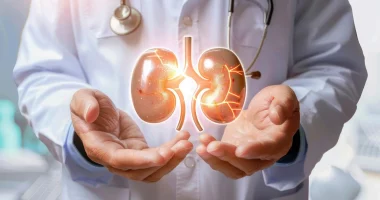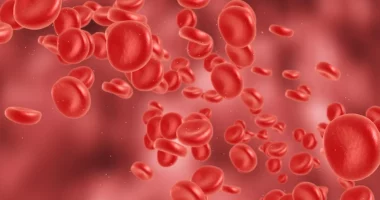Androgen insensitivity refers to a group of genetic conditions where the body doesn’t respond properly to male hormones like testosterone. These conditions are called androgen insensitivity syndromes (AIS) and can be divided into three main types: partial androgen insensitivity syndrome (PAIS), mild androgen insensitivity syndrome (MAIS), and complete androgen insensitivity syndrome (CAIS).
In PAIS, the body is somewhat responsive to male hormones but not fully. In CAIS, the body cannot respond to male hormones at all. MAIS represents a very mild form where the body’s response to male hormones is only slightly impaired.
AIS falls under a larger category known as disorders of sexual development (DSDs), also referred to as differences of sexual development. These conditions are sometimes called intersex, although this term is used less frequently now. Individuals with DSDs have physical traits that are not entirely male or female.
Androgen insensitivity affects how the body develops sexually. Usually, people learn that sex is identified by chromosomes: XY for males and XX for females. However, it’s more complex than that. Sex is also influenced by how these chromosomes function and how the body reacts to sex hormones. For instance, a person with XY chromosomes might develop female physical characteristics if they have CAIS.
Sex hormones, also called as steroid hormones, include testosterone and estrogen. The hormones that cause male traits are called androgens, including testosterone, androstenedione, dihydrotestosterone (DHT), and dehydroepiandrosterone (DHEA). When one person has androgen insensitivity, their body doesn’t fully respond to these male hormones.
Androgen insensitivity is rare. It affects about 13 out of every 100,000 people. CAIS specifically affects 1 in around 20,000 to 64,000 newborn males. The exact prevalence of PAIS is unknown.
Symptoms
Androgen insensitivity syndrome (AIS) used to be called testicular feminization syndrome because it was often discovered when girls, who appeared normal, did not start their periods. Upon further examination, it was found that these girls had testes instead of ovaries. Later, it was understood that AIS is caused by changes in the androgen receptor gene.
The symptoms of AIS vary depending on whether the condition is complete or partial.
Complete Androgen Insensitivity Syndrome (CAIS)
People with CAIS have XY chromosomes, which are typically male, but their bodies do not respond to male hormones (androgens) at all. As a result, they are born with female genitalia. CAIS often goes unnoticed until puberty when girls do not start menstruating. This is because they do not have a uterus. Other characteristics of CAIS include:
- Absence of underarm and pubic hair, since testosterone controls their growth.
- Normal breast development.
- Taller than average height for girls.
- Infertility, due to the absence of a uterus and ovaries.
Partial Androgen Insensitivity Syndrome (PAIS)
The symptoms of PAIS can vary widely. At birth, the genitalia of individuals with PAIS may range from almost entirely female to almost entirely male. They may also have genital characteristics that fall somewhere in between.
For those identified as males at birth, PAIS symptoms can include:
- Micropenis: An unusually small penis.
- Hypospadias: A condition where the urethral opening is located on the underside of the penis instead of the tip. This affects about 1 in every 150 to 300 male births.
- Cryptorchidism: A condition where one or both testes do not descend properly and have few or no germ cells, increasing the risk of testicular cancer.
- Breast growth during puberty: Some males may develop breasts.
For those identified as females at birth, PAIS symptoms can include:
- Enlarged clitoris: The clitoris may become larger, especially during puberty.
- Fused labia: The labia may partially fuse together, similar to how the scrotum forms in males.
Both the labia and the scrotum, as well as the penis and clitoris, develop from the same tissue in the embryo and form differently based on hormone exposure.
Mild Androgen Insensitivity Syndrome (MAIS)
Men with mild androgen insensitivity usually develop normally during childhood and adolescence. However, they might experience:
- Gynecomastia: The development of breasts in males.
- Reduced fertility: Some men with MAIS may have lower fertility rates.
The symptoms of AIS depend on how much the body can respond to androgens, with CAIS leading to complete unresponsiveness and a typically female appearance, while PAIS and MAIS present a spectrum of variations in physical traits.
Causes
Androgen insensitivity is led by changes in the androgen receptor gene. This is a genetic condition that is inherited in families as an X-linked trait, meaning it is passed down through the X chromosome, which comes from the mother. To date, over a thousand different mutations in this gene have been identified.
Diagnosis
Diagnosing androgen insensitivity often starts with noticing specific symptoms. For complete androgen insensitivity syndrome (CAIS), diagnosis typically occurs around puberty. Doctors may suspect CAIS if a girl has normal breast development but does not start menstruating and has no pubic or underarm hair. An ultrasound or other exams may then reveal the absence of a uterus.
Partial androgen insensitivity syndrome (PAIS) can be diagnosed earlier, especially if a newborn has ambiguous genitalia that are not clearly male or female. In such cases, several tests may be conducted, including:
- Karyotype: A test to count and analyze chromosomes.
- Hormone level tests: To check for abnormalities in hormone levels.
- Semen analysis: In adult men, to assess fertility.
For both CAIS and PAIS, hormone levels at birth and puberty can provide clues:
- At birth, individuals with CAIS and PAIS often have slightly higher testosterone and luteinizing hormone (LH) levels compared to normal males.
- During puberty, individuals with PAIS usually have normal or slightly elevated testosterone and LH levels, while those with CAIS have very high levels. This occurs because hormone production is regulated by feedback loops, which do not function properly in CAIS.
Other diagnostic methods include:
- Gonad biopsy: Examining a small tissue sample from the gonads. Individuals with any form of androgen insensitivity will have testes instead of ovaries.
- Genetic testing: Looking for mutations in the androgen receptor gene. This test is quite reliable for diagnosing CAIS but less so for PAIS, as only some of the mutations causing PAIS have been identified so far.
Treatment
People with complete androgen insensitivity syndrome (CAIS), treatment before puberty is usually unnecessary unless the testes cause discomfort or are noticeable in the abdominal wall. After puberty, the testes are typically removed to lower the risk of growing testicular cancer in adulthood. Psychological support may be necessary to help young women with their identity, and some may need procedures to increase vaginal depth, similar to the treatment for MRKH syndrome.
Medication for partial androgen insensitivity syndrome (PAIS) varies more widely. Historically, surgeries were performed on individuals with ambiguous genitalia to make them look more feminine, but these procedures often impacted sexual satisfaction and are no longer routine. For those who appear female at birth, treatment is similar to CAIS, with the potential removal of testes before puberty to prevent clitoral enlargement and labial fusion. Individuals identified as male at birth generally maintain a male gender identity, partly due to brain development influenced by androgens. However, their testes are usually removed in late adolescence to prevent cancer. Hormone replacement therapy, typically with estrogen, is often provided to support overall health, along with bone health, although PAIS individuals might have adequate bone growth from their testicular testosterone.
Managing AIS
People with androgen insensitivity commonly have good physical health, but they can face emotional and social challenges. Young individuals diagnosed with this condition might have queries about their sexual and gender identity. They may require help understanding that gender and sex are more complex than what they learned in school.
Dealing with infertility can be particularly hard. Learning they can’t have biological children can be devastating for some, leading them to question their sense of femininity or masculinity and whether they can have successful relationships. Support from others in similar situations or those coping with infertility can be very helpful. There are many support groups available both in person and online across the country, providing a space to share experiences and find understanding.
Summary
Androgen insensitivity syndrome presents unique challenges, from diagnosis to treatment and coping. While physical outcomes are generally positive, the emotional and social impacts can be significant. Understanding the complexities of gender and sexuality, along with navigating infertility, requires support and education.
Despite these challenges, individuals with AIS can lead fulfilling lives with the right resources and support networks. Continued research and awareness are essential to improve diagnosis, treatment, and overall well-being for those affected by this condition. Through empathy and understanding, we can create a more inclusive and supportive environment for everyone living with AIS.
External Links








